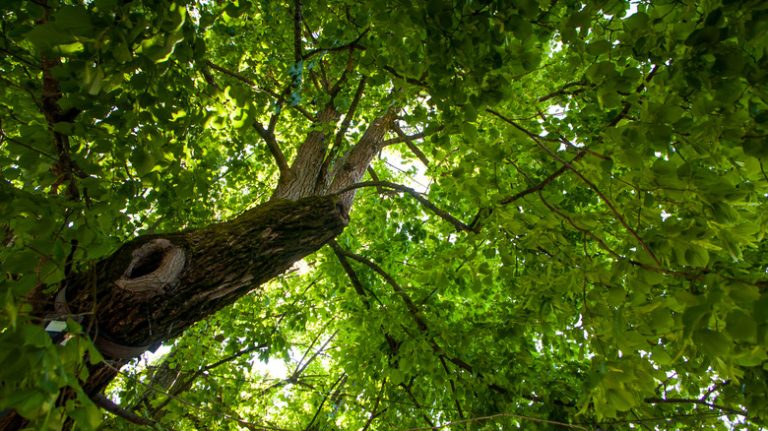If you’re looking for a unique addition to your garden, maybe you should consider growing a cornelian cherry. This small tree is not actually a cherry, but it gets its name from the bright red fruit it produces. Cornelian cherries are native to Europe and Asia and have been cultivated for centuries for their ornamental beauty and culinary uses.
One of the great things about cornelian cherries is that they’re relatively easy to care for. They can tolerate a wide range of soil conditions, as long as it is well-drained. Plant them in a sunny location with slightly acidic soil and they’ll be happy. They’re also resistant to many diseases and pests, making them a low-maintenance choice for your garden.
When it comes to overwintering, cornelian cherries are a little bit tricky. Their thin stems and delicate foliage can be damaged by cold temperatures, so it’s important to take some precautions. You can protect your trees by wrapping them in burlap or plastic, or by mulching heavily around the base of the plant. If you live in an area with extremely cold winters, you may also want to consider growing cornelian cherries in pots that can be moved indoors during the coldest months.
Cornelian cherries are known for their early spring flowering, which is followed by the production of tart, red fruits. These fruits can be used in a variety of recipes, from jams and jellies to pies and sauces. They can also be eaten fresh, although they won’t be as sweet as a traditional cherry. The fruit is high in nutrients, including vitamin C and antioxidants, making it a healthy addition to your diet.
In addition to their culinary uses, cornelian cherries have long been used in folk medicine for their potential health benefits. Some people believe that the fruit can help with digestion and improve overall immune function. While scientific studies on these claims are limited, many people enjoy cornelian cherries for their unique flavor and potential health benefits.
If you decide to plant cornelian cherries in your garden, you’ll also be providing a valuable food source for birds and other wildlife. The fruit is a favorite of many bird species, including finches and woodpeckers. You’ll get to enjoy the beauty of the fruit on your tree, and then watch as the birds feast on the berries in the fall.
So, if you’re looking for a new plant to add to your garden, consider the cornelian cherry. With its rounded shape, beautiful flowers, and delicious fruit, it’s sure to be a standout in your landscape. Plus, caring for these trees is relatively easy, making them a great choice for both experienced and novice gardeners.
Cornus mas
Cornus mas, commonly known as cornelian cherry or European cornel, is a species of flowering plant in the dogwood family. It is a deciduous shrub or small tree that can grow up to 15+ feet tall. The habit of Cornus mas is similar to that of the forsythia, with long, arching stems and a spreading shape.
In early spring, Cornus mas blooms with small clusters of yellow flowers that have a pleasant smell. The flowers are followed by small, bright orange fruits called cornelian cherries. These berries have a sour taste and are not commonly eaten raw, but they can be used to make jams, jellies, and other preserves. Some people also use the fruit to make liqueurs.
Cornus mas is a tough plant that can survive in a variety of conditions. It is drought-tolerant and can handle both full sun exposure and partial shade. It is also known to withstand cold temperatures, including freezing temperatures, although it may not fully ripen its fruit in colder regions. The leaves of Cornus mas turn a vibrant red in the fall before dropping for winter.
When caring for Cornus mas, it is important to provide regular water during dry spells. Mulch can be used to help retain moisture and suppress weeds. Pruning should be done in late winter or early spring before the plant starts to leaf out. It is generally a low-maintenance plant that does not require much attention once established.
Cornus mas can be propagated through seeds, cuttings, or layering. If propagating from seed, it is better to use fresh seeds and plant them in a well-draining soil mix. Cuttings can be taken from mature stems in late spring or early summer and should be treated with a rooting hormone before planting. Layering can be done by burying a low-hanging stem in the ground and encouraging it to root.
Overwintering Cornus mas can be done in a cold frame or unheated greenhouse. It is important to protect the plant from extreme cold and make sure it doesn’t dry out. In colder regions, it is also important to provide some winter protection, such as wrapping the plant in burlap or straw.
Overall, Cornus mas is a beautiful and versatile plant that can add year-round interest to any garden. Whether it’s the vibrant flowers in spring, the colorful leaves in fall, or the bright orange berries in winter, there is always something to enjoy about this lovely species.
Cornelian Cherry
The Cornelian Cherry is a fruiting tree that is commonly grown in gardens. Its scientific name is Cornus mas, and it is a member of the dogwood family. This tree is native to a wide range of regions, including Europe, Asia, and North Africa.
Identification of the Cornelian Cherry can be done by looking at its leaves, which are opposite and simple in shape. The fruit of this tree, known as its cherry, is round and tart in taste. It ripens in July and has a bright red color.
When it comes to growing the Cornelian Cherry, there are a few key things to keep in mind. It needs full sunlight to grow well, although it can tolerate some shade. The tree also requires well-drained soil and regular watering. It is hardy in zones 4 to 8.
Getting the Cornelian Cherry to fruit can be a bit of a challenge. It is known for being late to develop fruit, and the blossoms can be sensitive to frost. To encourage fruiting, it is recommended to use a fertilizer high in phosphorous.
In recent years, gardeners have been trying to find alternatives to the Cornelian Cherry for its similar properties. The viburnum genus, especially Viburnum trilobum, is a common choice. Other options include species from the genus Prunus, such as Prunus maackii and Prunus cerasifera.
Propagation of the Cornelian Cherry can be done through rooting cuttings or grafting. It can also be grown from seed, although this method can take a long time to see results. A technique known as layering can also be used to encourage rooting.
When planting the Cornelian Cherry, it is important to consider its size and branching structure. This tree can grow to be quite large, so it is important to give it enough space to spread. Pruning can help to maintain its shape and promote healthy growth.
In terms of interactions with other plants, the Cornelian Cherry is a good companion for many garden plants. Its large, early blooms can attract pollinators, and its berries provide food for birds. Some people have also taken to foraging for the berries themselves, as they can be used to make jams and preserves.
Overall, the Cornelian Cherry is a beautiful and versatile tree that can add interest and color to any garden. Its bright red fruit, attractive leaves, and lovely blooms make it a popular choice for gardeners.
Cornelian cherry dogwood
The Cornelian cherry dogwood, also known as Cornus mas, is a species of dogwood native to Europe and western Asia. It is a small, deciduous tree or multi-stemmed shrub that can grow up to 20 feet tall. The bark of the tree is brown and smooth, and the leaves are opposite and oblong in shape with a powdery appearance. In early spring, it produces clusters of small yellow flowers that bloom before the leaves appear.
The fruit of the Cornelian cherry dogwood is the main attraction for many people. The red, oblong berries are tart and have a flavor similar to cranberries or sour cherries. They can be used in a variety of recipes, including jams, jellies, sauces, and even vinegar. The fruits are rich in vitamin C and antioxidants. In some European countries, the fruit is used to make a traditional liqueur called “cornelian cherry schnapps.”
Cornelian cherry dogwood is relatively easy to grow and is adaptable to different soil types. It can tolerate both acidic and alkaline soils and is resistant to many pests and diseases. It prefers full sunlight but can tolerate partial shade as well. The tree can be propagated through seeds or by taking cuttings. It will typically start producing fruit within three to five years of planting.
When caring for a Cornelian cherry dogwood, it is important to provide adequate moisture, especially during the first few years of growth. Mulching around the base of the plant can help retain moisture and suppress weeds. It is recommended to prune the tree in late winter or early spring to maintain its shape and encourage new growth. Some people choose to keep the plant in containers or tubs to make it easier to control its size.
In the United States, the Cornelian cherry dogwood has naturalized in some areas, particularly in the eastern states. It is often considered an ornamental tree due to its attractive flowers and fruit. It is also valued for its ability to attract wildlife, such as birds, which feed on the berries. The tree is a member of the Cornaceae family, which includes other dogwood species like Cornus florida and Cornus sericea.
Identification of the Cornelian cherry dogwood can be done through its distinctive characteristics. The opposite arrangement of its leaves and its cluster of small, yellow flowers in early spring are key features. The berries are also a good way to identify the tree, as they are unique in appearance and color. There are several cultivars of Cornelian cherry dogwood available, including ‘Flava’ with yellow fruit and ‘Elegantissima’ with variegated leaves.
In folk medicine, the Cornelian cherry dogwood has been used for various purposes. Its bark was traditionally used to treat diarrhea, while the fruit was believed to have a cooling effect on the body. Some people also believe that the fruit can help with heart health and circulation. While there is limited scientific evidence supporting these claims, the fruit is still enjoyed as a healthy snack and ingredient in various dishes.
If you are interested in foraging for wild food, the Cornelian cherry dogwood is definitely worth considering. The berries can be harvested in late summer or early fall when they are fully ripe. They are usually ready to be picked when they turn a deep red color. The fruit can be eaten fresh or used in preserves, juices, or baked goods. Just be sure to leave some berries for the wildlife too!
In conclusion, the Cornelian cherry dogwood is a great addition to any garden or naturalized area. Its beautiful flowers, attractive berries, and resistant nature make it a popular choice among gardeners and landscapers. Whether you are looking for a tree that provides shade, attracts wildlife, or simply adorns your landscape, the Cornelian cherry dogwood is definitely worth considering.



